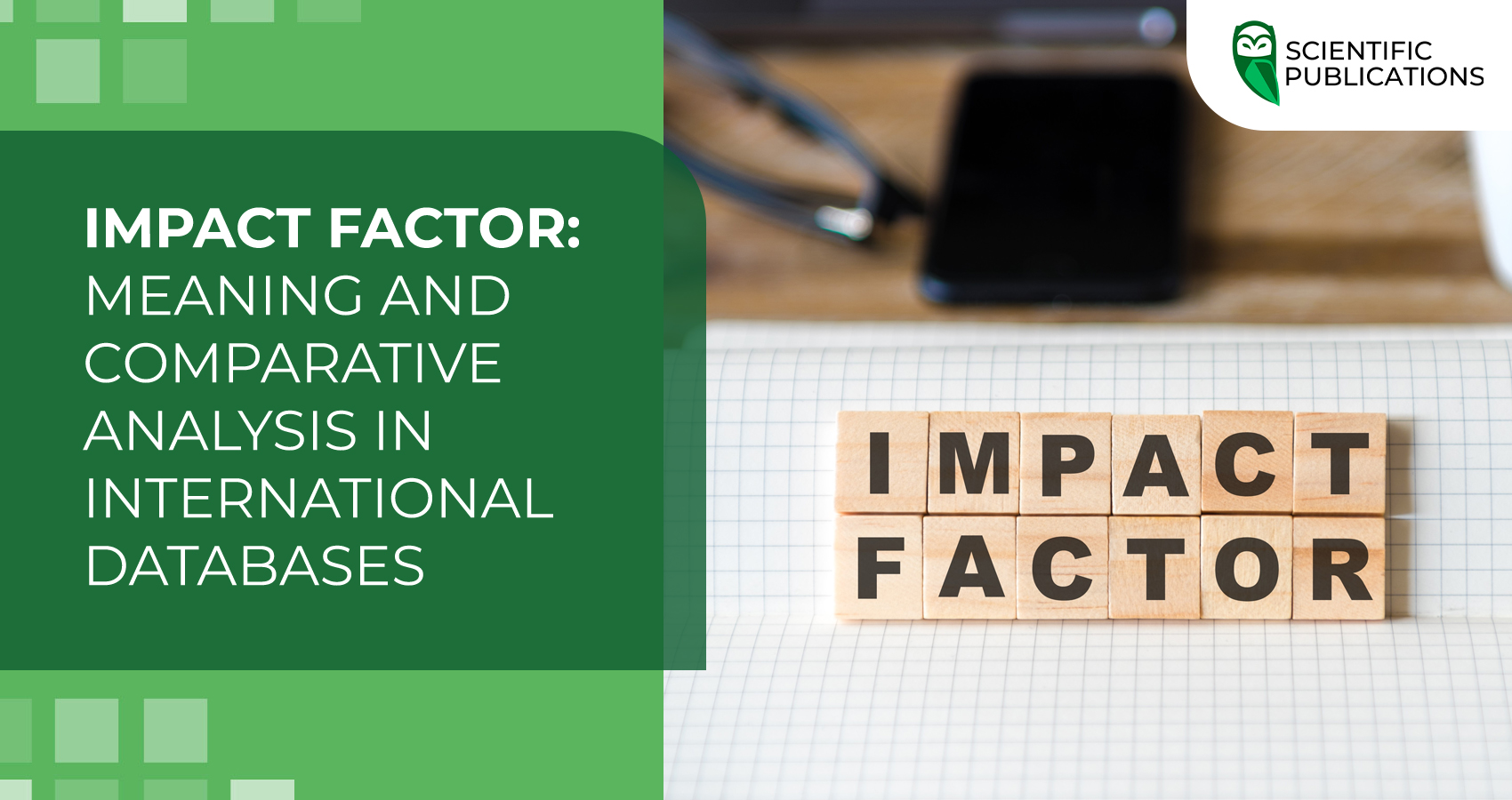In the world of scientific publications, there is an indicator that plays a key role in assessing the quality and impact of scientific journals - the impact factor (IF). It measures the number of citations a journal article receives over a certain period of time. But how exactly is impact-factor calculated and what is it really for?

The impact-factor plays an important role and has several key uses:
- It helps scientists select a journal with a high impact factor to publish their research, which can increase the visibility and citation of their work
- a high impact factor indicates the good quality and significance of the research published in a journal
- Universities and research organizations use the impact factor to assess the scientific contribution and productivity of their staff, which can influence the allocation of grants and funding for research projects.
However, the impact factor has its limitations.
First, citations vary by discipline. In such fields of knowledge as medicine and biology, articles may be cited more often than in the humanities, which can create distortions when comparing impact factors of journals from different fields. Therefore, it is not a good idea to compare the impact factors of journals from different fields of science.
Second, the impact factor takes into account citations only for the last two years, which does not allow us to fully track the long-term impact of an article.
Third, the impact factor may be overestimated due to the large number of citations of reviews, conference proceedings, and other types of articles that are often cited but are not always original research.
What are the main differences between the impact factor and other metrics?
In the scientific metrics space, impact factor is not the only metric that is used to assess the impact of scientific publications. Other metrics such as CiteScore, h-index, Journal Citation Reports (JCR) complement IF. CiteScore is calculated over a three-year period and can provide more stable data, while the h-index assesses the productivity and impact of individual researchers. These metrics help to create a more complete picture of the importance of scientific papers.
Let's take a closer look at each of them and the science metrics platforms in which they are applied.
1. Web of Science
- Journal Citation Reports (JCR).
JCR, a report provided by Clarivate Analytics (which owns Web of Science), calculates the impact factor for scientific journals. The calculation is based on the formula:
IF = 5.0
if, for example, articles published in a journal in 2021 and 2022 were cited 1000 times in 2023, and the total number of articles in those two years was 200.
This means that, on average, each article from this journal was cited 5 times during 2023.
The JCR publishes annual reports that present impact factors for thousands of journals covering a variety of disciplines.
2. Scopus
- CiteScore.
In Scopus, the impact factor has been replaced by CiteScore, which is calculated using a similar formula, but over a three-year period.
CiteScore is available on the Scopus platform and is used to assess the impact of scientific journals. This indicator allows for a longer-term analysis and provides stability in citation assessment, but does not take into account the specificity of citations between different disciplines.
The JCR calculation methodology is more comprehensive and may include adjustments for different types of articles and fields of science, while CiteScore has a simpler calculation method, which may simplify interpretation but also reduces accuracy when comparing across disciplines.
3. Google Scholar
- H-index.
Although Google Scholar does not use the impact factor directly, it provides information about the h-index of journals and scholars, which can also reflect the impact of publications. The h-index takes into account both the number of citations and the number of articles with high citation counts.
Using multiple metrics avoids the limitations of each metric and provides a more complete picture of the impact and quality of scientific journals and publications.
What is the impact of the impact factor?
This indicator can significantly influence the career development of a scientist and the reputation of scientific institutions. It serves not only as an indicator of the quality of scientific journals, but also as an important criterion for assessing scientific productivity and impact.
For scientists, the impact factor is a key aspect in the process of publishing research. Journals with a high impact factor are often considered more prestigious, and publishing in such journals can increase the visibility and citation of a scientist's work. This, in turn, can contribute to career advancement, funding, grants, awards, fellowships and other scientific honors.
For academic institutions, the impact factor serves as one of the key criteria for evaluating their scientific activity and success. Universities and research institutions often analyze the impact factor of journals in which their staff publish to assess the overall level of scientific impact and quality of research.
The publication of researchers' work in journals with a high impact factor has a positive impact on the reputation of the institution and helps to attract new students as well as sponsors to fund projects.
This makes the impact factor an important tool both for scientists who publish individually and for scientific institutions seeking recognition and significant achievements in science.
Today, the impact factor is actively used around the world to achieve scientific goals. Thus, although this metric remains an important indicator, its interpretation requires a careful approach and consideration of many factors.
If you need assistance in publishing and successfully indexing your article in scientometric databases, the Scientific Publications team is ready to provide professional support to achieve your scientific goals. If you still have questions regarding publishing in Web of Science or Scopus, leave your contact details in the form below and our manager will get back to you within a business day.





